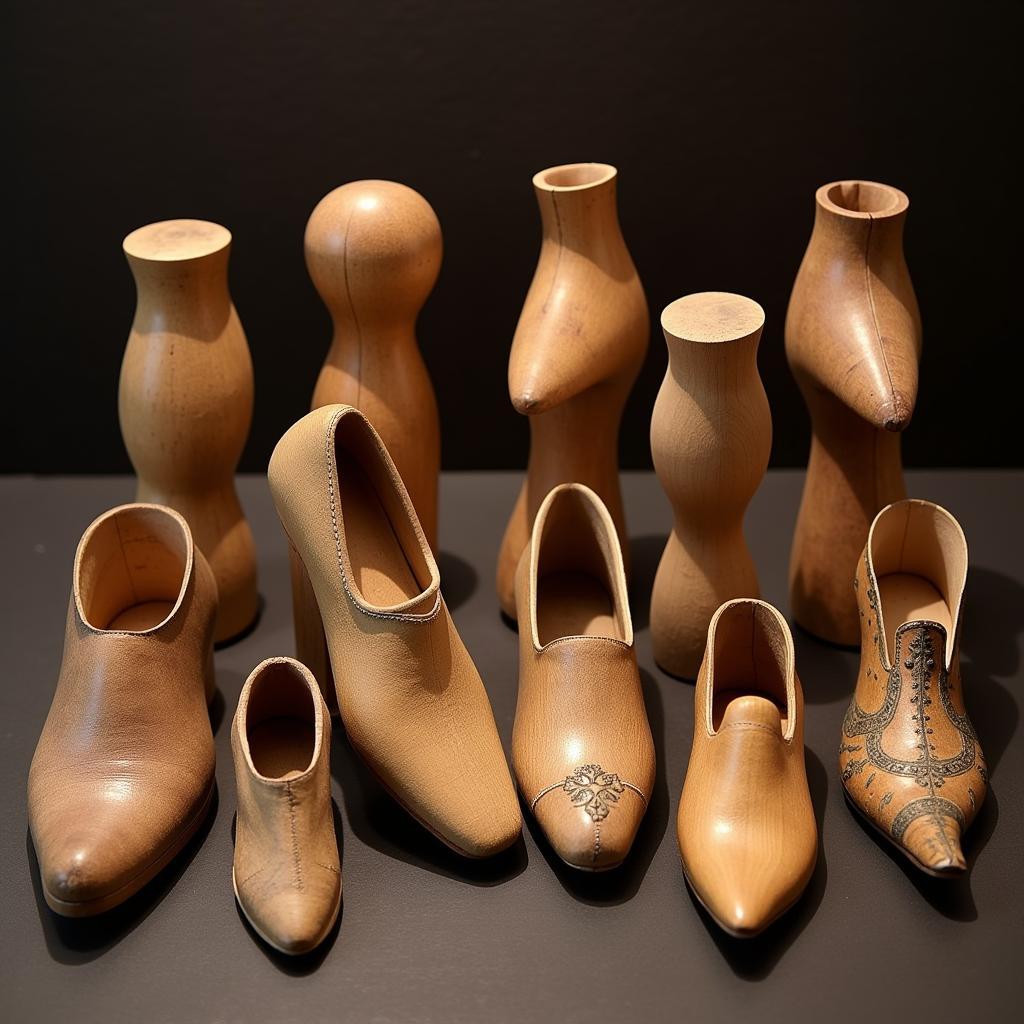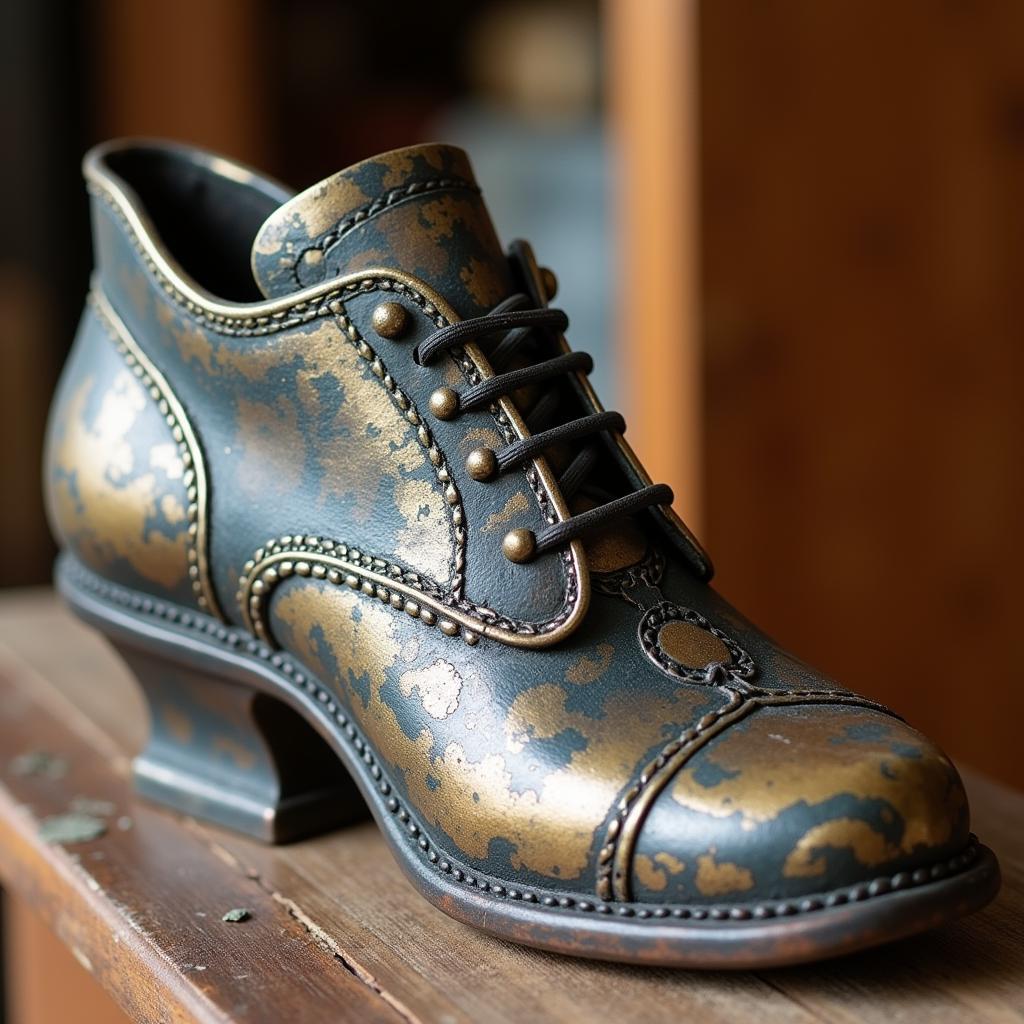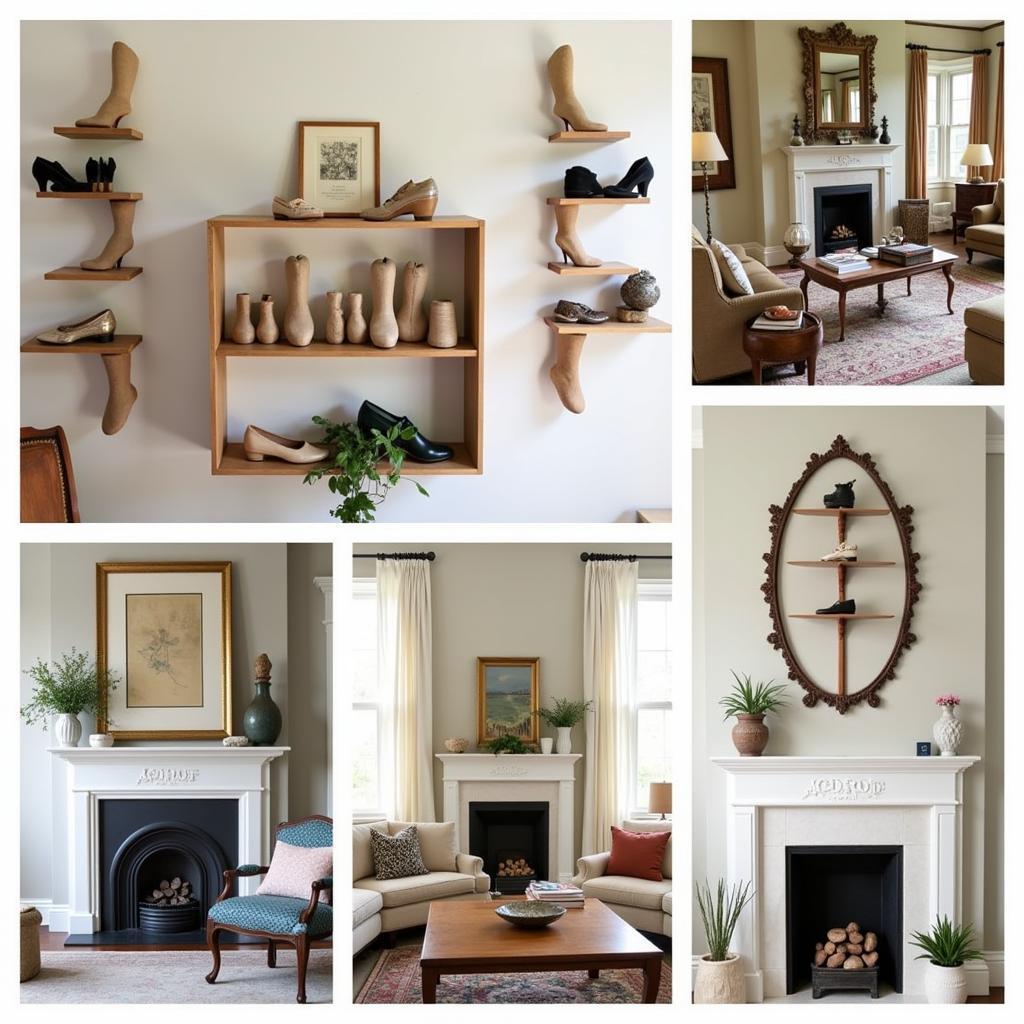Unveiling the History and Beauty of Antique Shoe Forms
November 28, 2024Antique Shoe Forms offer a fascinating glimpse into the history of footwear and craftsmanship. These beautifully crafted objects, often made of wood or metal, were essential tools for cobblers in shaping and perfecting shoes. From their practical use to their modern-day appeal as decorative items, antique shoe forms tell a compelling story.  Collection of Antique Wooden Shoe Forms
Collection of Antique Wooden Shoe Forms
The Evolution of Antique Shoe Forms: From Function to Fascination
Throughout history, shoemaking has evolved, and so have the tools used in the craft. Early shoe forms were simple, rudimentary shapes, often carved from wood. As shoemaking techniques progressed, so did the design and complexity of the forms. The Industrial Revolution brought about mass production and the use of metal forms, leading to greater precision and efficiency. This evolution is reflected in the diverse range of antique shoe forms available today, each telling a unique story of a specific time and place. They provide valuable insights into the changing fashions and technologies of shoemaking throughout the centuries. For those passionate about history and craftsmanship, collecting antique shoe forms can be a rewarding pursuit.
Identifying and Valuing Antique Shoe Forms
Collecting antique shoe forms can be a rewarding experience. However, identifying and valuing these pieces requires careful consideration. Factors such as the material, age, condition, and maker can all influence the value of an antique shoe form.  Detailed View of an Antique Metal Shoe Form For instance, handcrafted wooden forms from the 18th or 19th centuries are often highly prized by collectors. Similarly, forms with unique markings or those made by renowned makers can command higher prices. It’s important to consult with experts or reputable antique dealers to accurately assess the value of your antique shoe forms. You can also explore online resources and auction sites to compare similar pieces and gain a better understanding of market prices.
Detailed View of an Antique Metal Shoe Form For instance, handcrafted wooden forms from the 18th or 19th centuries are often highly prized by collectors. Similarly, forms with unique markings or those made by renowned makers can command higher prices. It’s important to consult with experts or reputable antique dealers to accurately assess the value of your antique shoe forms. You can also explore online resources and auction sites to compare similar pieces and gain a better understanding of market prices.
Understanding the Materials and Construction
Antique shoe forms were primarily crafted from wood or metal. Wooden forms often exhibit the natural grain and texture of the wood, while metal forms may feature intricate designs or markings. The construction of the form, including the joinery or welding techniques, can also provide clues about its age and origin. It’s crucial to consider these factors when identifying and valuing an antique shoe form.
Spotting Rare and Valuable Forms
Certain antique shoe forms are considered rare and valuable due to their age, maker, or unique features. Early forms made by renowned makers or those used for specialized footwear, such as children’s shoes or boots, are often highly sought after by collectors. Look for unusual shapes, markings, or intricate details that can indicate a form’s rarity and value.
Displaying and Caring for your Antique Shoe Forms
Antique shoe forms can be beautiful decorative objects in their own right. They can be displayed on shelves, mantels, or incorporated into artistic installations.  Creative Display Ideas for Antique Shoe Forms Proper care is essential to preserve their beauty and historical value. Avoid exposing them to extreme temperatures or humidity, and dust them regularly with a soft cloth. If you have questions on how to care for specific antique items, you could even consider visiting websites like selljunk for tips.
Creative Display Ideas for Antique Shoe Forms Proper care is essential to preserve their beauty and historical value. Avoid exposing them to extreme temperatures or humidity, and dust them regularly with a soft cloth. If you have questions on how to care for specific antique items, you could even consider visiting websites like selljunk for tips.
Conclusion
Antique shoe forms offer a captivating glimpse into the world of footwear history and craftsmanship. Whether you’re a seasoned collector or simply appreciate the beauty of these antique objects, exploring their history, identifying their features, and understanding their value can be a rewarding experience. Remember, antique shoe forms not only represent the evolution of shoemaking but also offer a tangible connection to the past. If you’re considering purchasing your own key to the city for sale, these antique treasures can be a great addition to your collection.
FAQ
- What are antique shoe forms made of? Typically, wood or metal.
- How can I determine the value of an antique shoe form? Factors like age, material, maker, and condition influence value.
- Where can I find antique shoe forms for sale? Antique shops, online marketplaces, and auctions.
- How should I care for my antique shoe forms? Avoid extreme temperatures and humidity, and dust regularly.
- Are antique shoe forms a good investment? Their value can appreciate, but it’s best to consult with experts before investing.
- What are some common types of antique shoe forms? Wooden lasts, metal forms, and specialized forms for children’s shoes or boots.
- How can I identify a rare or valuable antique shoe form? Look for unique features, markings, or those made by renowned makers.
For further assistance, please contact us: Phone: 0915117113, Email: [email protected] or visit us at: Hamlet 3, Binh An Hamlet, Phu Thuong, Vietnam, Binh Phuoc 830000, Vietnam. Our customer service team is available 24/7.